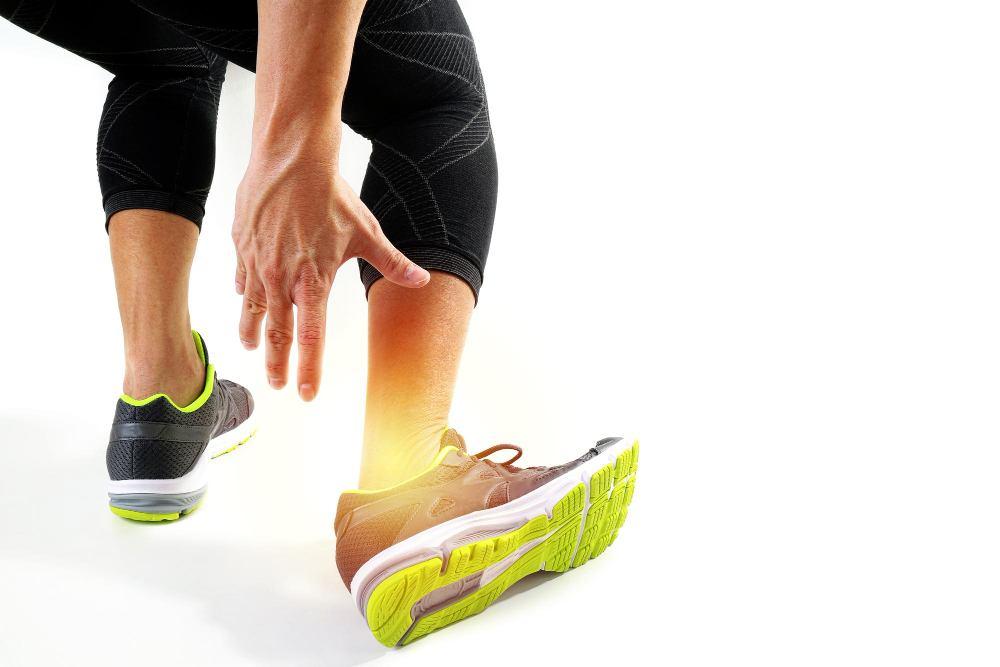Achilles Ruptures in Professional Athletes
 The term “torn Achilles” frequently emerges in the world of sports, often accompanied by grimaces and somber reflections on the athlete’s career. However, understanding the intricacies of this injury beyond the broadcast booth is crucial for athletes and enthusiasts alike. In this brief article brought to you by Mountain Spring Podiatry, we dabble in the basics of the Achilles tendon and share some preventative measures and treatment options.
The term “torn Achilles” frequently emerges in the world of sports, often accompanied by grimaces and somber reflections on the athlete’s career. However, understanding the intricacies of this injury beyond the broadcast booth is crucial for athletes and enthusiasts alike. In this brief article brought to you by Mountain Spring Podiatry, we dabble in the basics of the Achilles tendon and share some preventative measures and treatment options.
This information is for educational purposes and should not be taken as medical advice. For personalized advice, it is always advisable to consult with a licensed podiatrist. Residents in the area can call Mountain Spring Podiatry to schedule an appointment with foot specialists.
What is the Achilles Tendon?
The Achilles tendon, named after the Greek mythological hero Achilles, is the largest and strongest tendon in the human body. Situated at the back of the lower leg, it connects the calf muscles to the heel bone, facilitating essential movements like walking, running, and jumping.
An Achilles tendon rupture occurs when the tendon tears partially or completely. This injury commonly affects individuals engaged in sports that involve sudden bursts of acceleration or jumping, such as basketball, soccer, and tennis. However, it can also occur during mundane activities, especially in individuals with weakened or degenerated tendons.
Signs of a Torn Achilles Tendon
The telltale signs of an Achilles tendon rupture include a sudden, sharp pain in the back of the ankle or calf, often accompanied by a popping or snapping sensation. Swelling and difficulty walking or standing on tiptoe often follow.
An Achilles tendon rupture is urgent and demands prompt investigation. Diagnosis typically involves a physical examination, possibly supplemented by imaging tests like ultrasound or MRI to assess the extent of the injury.
Treatment and Recovery from an Achilles Tendon Rupture
While an Achilles tendon rupture can be debilitating, especially for athletes reliant on their lower extremities, prompt and appropriate treatment can facilitate a successful recovery. Non-surgical approaches such as immobilization with a cast may be suitable for less severe injuries or individuals with specific health considerations.
Surgical intervention, often involving suturing the torn tendon ends together, is often recommended for younger, active individuals or those with significant tendon damage. A foot doctor is educated and trained to tailor the most suitable treatment plan for each patient.
What to Do Following Treatment
A structured rehabilitation program following treatment is essential. This typically involves a gradual progression from gentle range-of-motion exercises to more strenuous activities like strengthening exercises and functional movements. Foot care and exercises backed by sports medicine can have athletes back on the field as soon as possible – without rushing.
For Future Reference: Preventative Measures
While the threat of an Achilles tendon rupture looms large, proactive measures can mitigate the risk of succumbing to this injury. Proper conditioning can enhance resilience and endurance. For instance, you can strengthen the calf muscles and Achilles tendon through targeted exercises such as calf raises and eccentric heel drops.
Maintaining a healthy body weight, avoiding sudden spikes in training intensity, and wearing appropriate footwear can help prevent undue strain on the tendon. If you have any questions or concerns regarding a foot or ankle injury, then feel free to call Mountain Spring Podiatry and schedule an appointment with a licensed podiatrist.
